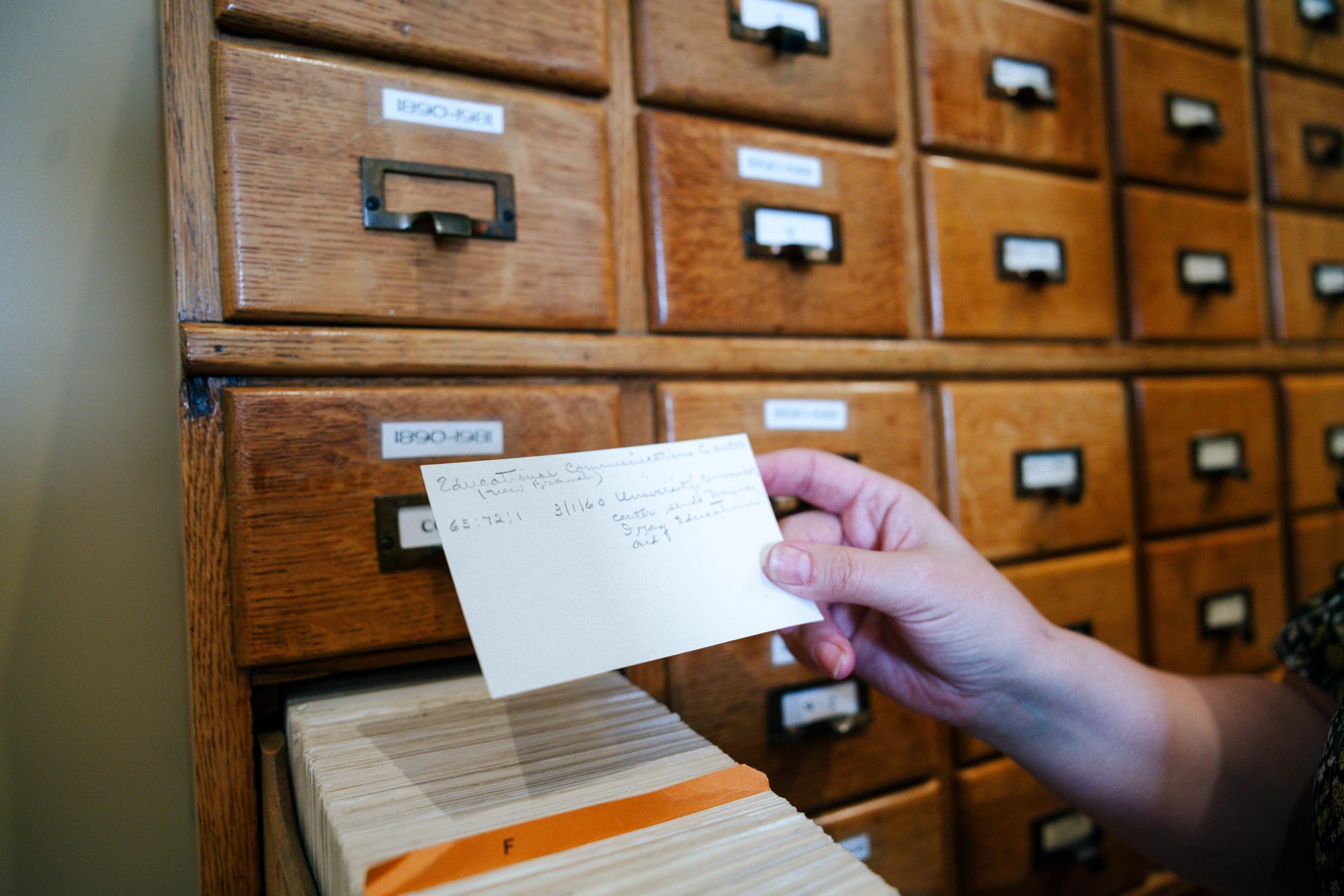On the fourth floor of the University of Virginia’s Shannon Library lies an inconspicuous cabinet containing an invaluable, but old-fashioned, resource: a card catalog.
The card catalog – the librarians say it’s more accurately described as an index – has information about issues of the Cavalier Daily and UVA Alumni News dating back to the late 19th century and going through the early 1990s, with information on everything from a Louis Armstrong concert to curriculum changes to integration at the University.
It’s one of the last card catalogs in use in the UVA Library system, which includes Shannon, Clemons Library and the Albert and Shirley Small Special Collections Library, among others.
Online card catalogs emerged in 1980, according to the Library of Congress, and the advantages were clear. The little index card containing the entry for, say, “Jane Eyre” by Charlotte Brontë could easily fall under a shelf and get lost. Not so for an online catalog, whose users can peruse a library’s collection from anywhere, at any time.












